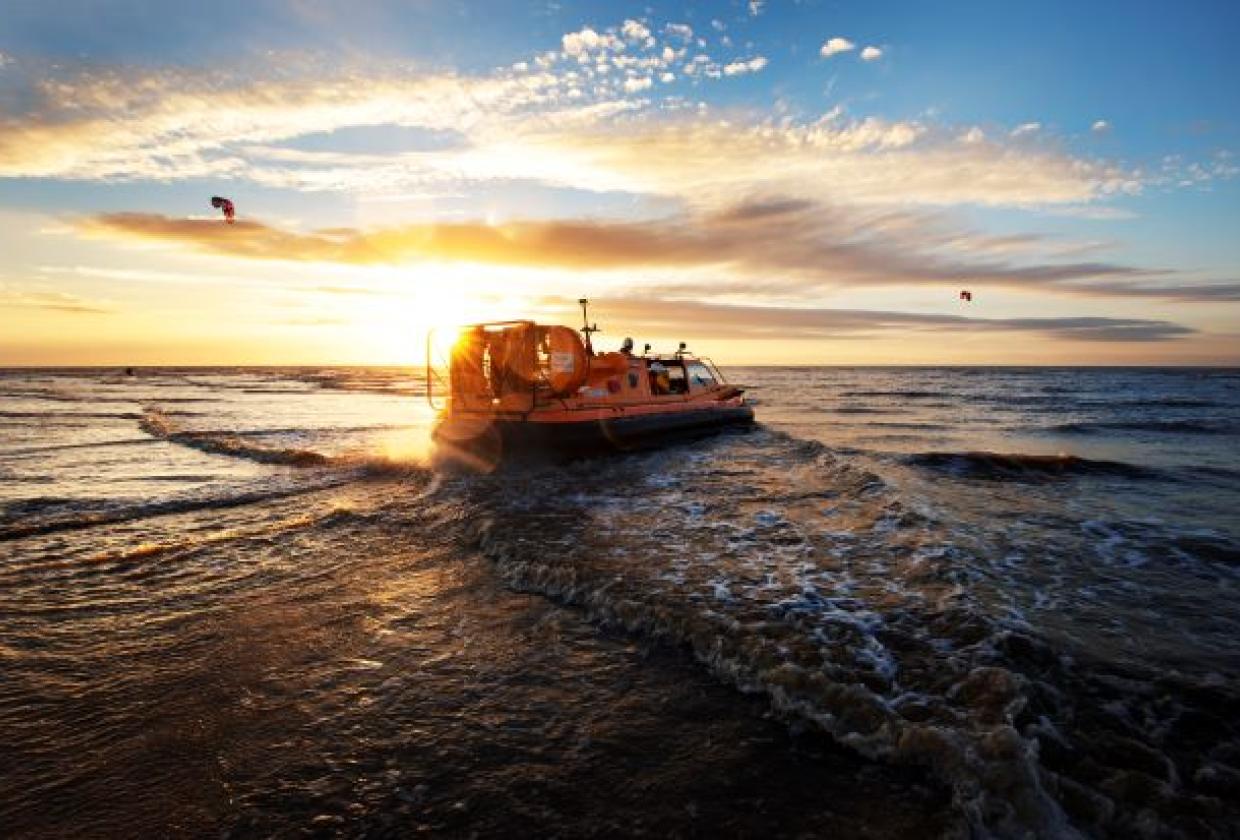20 years of saving lives: Hunstanton RNLI mark anniversary of the Inshore Rescue Hovercraft

The Royal National Lifeboat Institution (RNLI) is this week celebrating 20 years since the first Inshore Rescue Hovercraft joined its fleet. Designed for search and rescue purposes, the hovercraft can tackle incidents on tidal mudflats or sand where the surface is too soft to support land vehicles and where the water is too shallow for boats.
In 2003, Hunstanton Lifeboat Station received 'Hunstanton Flyer', funded by The Civil Service Lifeboat Fund, making it the second RNLI station to operate a hovercraft. The IRH has extended the charity’s lifesaving capability around Hunstanton having aided over 260 people and saved 13 lives over the 19-year period. The hovercraft has been an invaluable asset for its volunteer crews in saving lives at sea.
Hovercraft Commander and Pilot at Hunstanton RNLI, Ian Devenney, said:
‘The hovercraft’s unique features and capabilities including its versatility and speed makes it essential at Hunstanton in getting over sandbanks, mudflats and other dangerous terrain that a traditional lifeboat can’t cross. It has made a huge difference to the efficiency and effectiveness of our 24/7 search and rescue service, enabling us to save even more live around the coast.’
Hunstanton RNLI is also known for its pioneering role within the charity as the station saw two hovercraft female-firsts: Charlie Parfitt, the first female Hovercraft Commander and Leesa Epsley, the first female Hovercraft Pilot in the RNLI. Leesa said: ‘I felt so proud to be the first female at the RNLI to hold a hovercraft pilot licence. It’s a great achievement.’
Leesa juggles volunteering with being a supply teacher, retained firefighter and a mother but has always had an interest in lifesaving:
‘I joined the RNLI back in 2003, the same year the hovercraft arrived on station at Hunstanton. As a previous powerboat instructor and lifeguard, I wanted to use my experience to help others.’
Leesa became the RNLI’s first female hovercraft pilot in 2007, meaning that this year she is celebrating 15 years in the role. Leesa shares: ‘One of the things I love most about being part of the crew is that every time we’re called out, we’re faced with new challenges and we work together to solve them.
‘The hovercraft is totally different from a traditional RNLI lifeboat in terms of how it launches, how it’s flown, crew roles, equipment onboard, methods for rescuing people and it’s accessibility to inland areas. It has no brakes, it can’t reverse and because it’s all on a cushion air, it can be easily affected by the wind. It’s great to fly but it can be challenging.’

